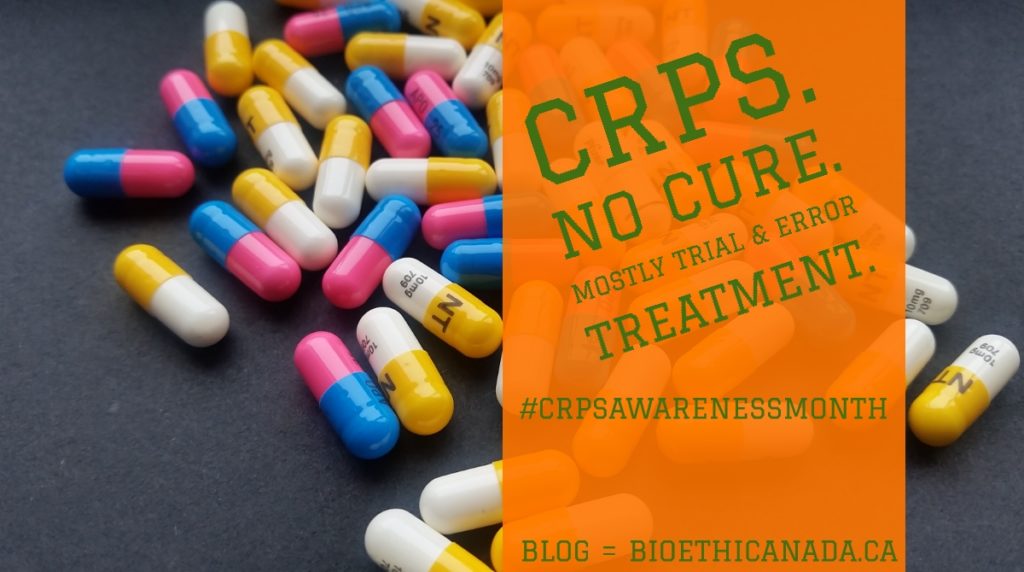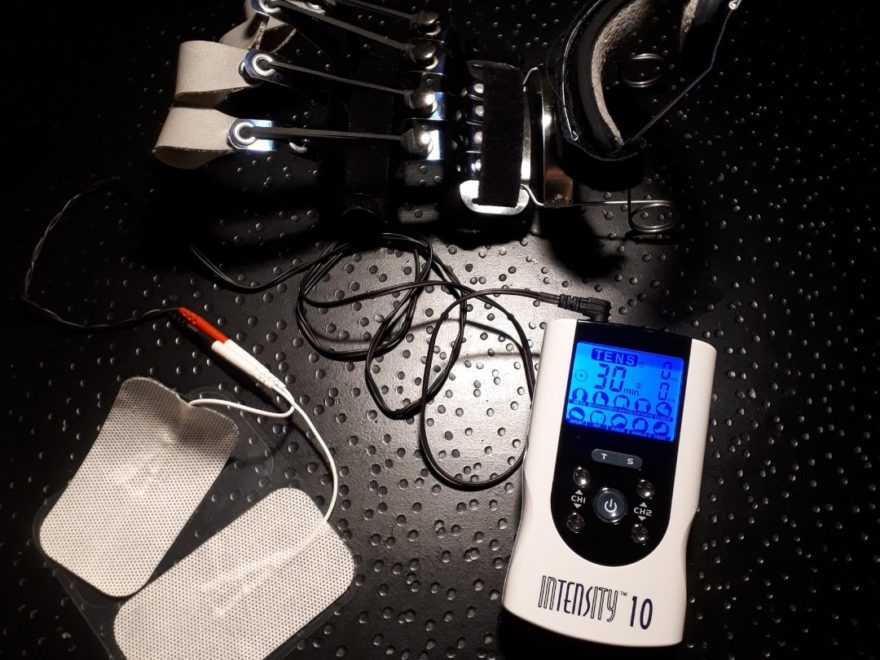Today’s a bright orange day! Why, you ask? Great question! The first Monday of November each year is set aside to raise awareness of a rare and usually invisible disease. It’s called Complex Regional Pain Syndrome, or CRPS for short. It’s still sometimes called Reflex Sympathetic Dystrophy (RSD), which was its older name.
I’ve been living with CRPS since last year. Getting a diagnosis , and then finally some treatment, was rather challenging – in large part because “CRPS/RSD is not well recognized in Canada”.(1)
This is why it’s so important to raise awareness of this condition, here in Canada. Even though CRPS is considered to be a chronic pain disease, other specialists need to be aware of it.
An excellent example of this is dermatologists. CRPS often causes allodynia, an extreme sensitivity of the skin, leading some patients to consult a dermatologist before they’ve been diagnosed with this disease. This puts dermatologist. In many cases, a dermatologist might be the first physician a person consults with, for their CRPS symptoms. This puts dermatologists in a good position to diagnose CRPS rapidly – but only if they recognize it!
An article in JAMA Dermatology, a medical journal published by the American Medical Association (AMA), made this very clear:
It is important for dermatologists to understand and recognize CRPS as a neurological disorder with major dermatologic implications.
The ability of dermatologists to identify and direct patients with this syndrome is a critical factor in determining the likelihood of favorable outcomes following diagnosis of CRPS.
This report outlines and reviews a neurological condition presenting with clinically significant cutaneous changes.
We illustrate the bias that dermatologists may have in exclusively associating patient complaints with dermatological implications.
This stresses the necessity for dermatologists to perform comprehensive medical histories and physical examinations to minimize diagnostic error and improve patient care.”(2)
The same holds true for other types of physicians; family doctors, orthopedic surgeons, rheumatologists, and others. This is because CRPS is both a neuroinflammatory disease and an autoimmune condition. It usually affects the limbs; the arms or legs. CRPS can also spread up an extremity, and sometimes move from limb to limb.
Even though some doctors are now diagnosing it sooner, many patients aren’t seen soon enough during the six month window when there is an 80-90% success rate.
Others are diagnosed and do not receive the proper treatment. Why?
In medical school, CRPS is not taught.
By better educating the medical community on this rare disease, we hope that every newly diagnosed patient will be able to have successful treatment.”(1)
This lack of awareness is really surprising, given that CRPS “is widely considered to be the single worst source of pain – ranking higher on pain scales than childbirth, cancer and amputation. Yet the condition is rare and can be difficult to recognize. As a result, patients with CRPS… according to the National Institutes of Health – can search for an average of approximately four years before being properly diagnosed with the condition”.(3)
One oft-cited statistic is that “Using the McGill Pain Index, many diseases are rated out of 50 on this index. The score for cancer pain is 28 and for RSD/CRPS pain, a whopping 42”.(1)
Complex Regional Pain Syndrome creates a wide range of symptoms, and affects a wide range of functions in the body. Those most commonly listed(5) are:
- Central sensitization (changes in the central nervous system)
- Neuropathic pain
- Visceral pain
- Autonomic dysfunctions
- Somatovisceral dysfunctions
- Abnormal motor functions
- Localized vascular breakdown/leakage
- and more…
There are still no truly effective treatments for CRPS, leaving patients and their physicians having to adopt a trial-and-error approach.
As always, thanks so much for visiting the blog! It is, and will remain, 100% non-commercial ‘-)

References:
(1) https://www.rsdcanada.org/parc/english/parc/aboutus.html
(2) https://jamanetwork.com/journals/jamadermatology/fullarticle/1861486
(4) https://www.ncbi.nlm.nih.gov/pmc/articles/PMC3661922/
(5) http://www.burningnightscrps.org/sufferers/pain-scale/
(5) https://emedicine.medscape.com/article/1145318-treatment#d5

